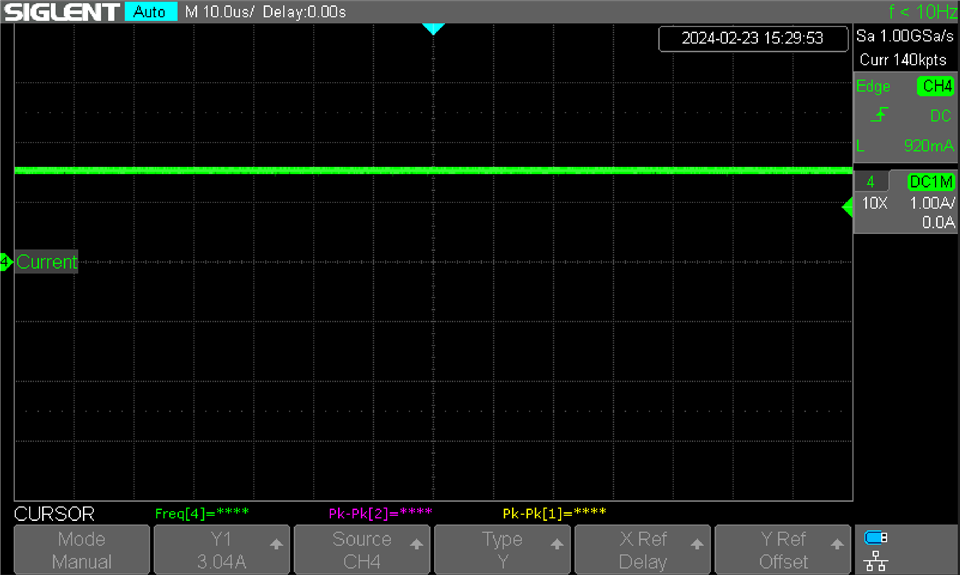Other Parts Discussed in Thread: DRV8262,
Hello,
I am trying to use the DRV8262 to drive a TEC but I am having issues with the integrated current regulation, and was hoping someone might have an insight.
I have an LC filter (same as DRV8262 datasheet) at each leg of the TEC, with L=22uH and C = 20uF. The nominal resistance of TEC = 2ohm. Input voltage is 12V
DRV8262 configuration:
Toff=7us
Decay mode = slow
Dual Hbridge mode (using output 1/2)
I am specifically trying to use the integrated current regulation by adjusting Vref and inputting a ON/OFF signal (100% duty cycle only).
Observations:
If Vref is high enough (>0.7V), pushing the current past ~1.2A, the current starts to oscillate(>50% ripples) wildly, looks like unstable current regulation loop. The higher I push Vref, the larger the current oscillations get.
If Vref is lower than .7V, current is stable but lowering Vref does not lower the current through the TEC, even at Vref = 0.
If I use input duty cycle(@200kHz) to adjust current, output current looks good (low ripple), and current level follows duty cycle.
Am I missing something on how the integrated current regulation works? Is there something I am missing specific to the EVM? Any suggestions?











